There is too much misinformation about how SEO works.
And this will not help increase investment in our industry.
In this article, we’ll find out all about it.
Learn exactly why and how SEO can help your brand grow, sell, and lead.
Let’s dive in.
how brands grow
Marketing research reveals how brands grow.
They grow by acquiring new light buyers.
(Light buyers are consumers who purchase a particular product or service only occasionally or infrequently. They may not be very enthusiastic or loyal to a particular brand or product category.)
But how can you increase your acquisition rate of new light category buyers?
Again, the research is clear. Increase brand value.
- mental availability: The likelihood that a brand will be considered in a purchase situation.
- physical availability: Ease and convenience of purchasing brands.
These conditions are widely accepted by marketing leaders and have been for about a decade.
But does this apply to SEO?
Dig deeper: Top 10 SEO benefits of building a brand people trust
Some SEOs don’t understand marketing
I recently saw this tweet on X.
“When people search Google, they don’t care about logos or brands. They care about finding relevant pages and solving their problems.”
It had 17,000 views, over 200 likes, and over 40 reposts.
However, this advice is completely wrong and is an example of how out of touch some SEO is these days.
The quality of your brand, logo, and website is not only essential for marketing; SEO is actually about providing these assets.
Repeated research has shown that website quality and brand perception are used to form trust.
If I don’t trust them, I won’t buy.
But that’s not all. Your logo and branding is how we remember your business. In marketing, these are known as “distinctive brand assets.”
Think of your website as a package.
Our job as SEOs is to get your website on the shelf. If you don’t understand this, how can you advise your clients?
Dig deeper: Modern SEO: Packaging your brand and marketing for Google
Get the daily newsletter search that marketers rely on.
How online purchasing works
As SEOs, we need to understand how purchases happen and be able to explain them accurately.
And this is the simplified version.
1. Trigger
We all receive search cues. These can be internal things such as emotions and thoughts. Or external things like advertisements or life events.
At this point, one of two things happens:
Search brands/websites directly.
This is known as navigational search.
You can also type keywords into a search engine or open apps like YouTube or TikTok.
The key to brand growth is the state of searcher needs. You want to be found and searched for by people looking to buy.
These are people who are considering buying or are ready to buy today.
And your job as an SEO is to get your brand in front of potential customers in these two need states.
There are good reasons for this.
Reaching people who are considering buying from your brand helps build the emotional availability mentioned above. Reaching people who are looking to buy increases physical availability.
2. Exploration
The next stage of the search is known as the exploration stage. This is where things get tricky, so start researching categories.
And yes, people head to social media apps to do research.
A fierce battle begins at this stage.
A battle over memory.
Purchasing decisions are often made over a long period of time.
And in the B2B sector this is even longer.
But I don’t need to say this.
It took me at least 6 months to choose the car I liked.
However, I did not spend six months thoroughly researching it every day. Life gets in the way. We all juggle multiple tasks and demands that interfere with decision-making.
During this period, we will be subject to retargeting with advertising on multiple platforms. Advertising plays a major role here.
Companies with good advertising that reaches people regularly will be more easily remembered during the most important purchasing decisions.
But I think the majority of people reading this article are targeting brands with limited advertising.
So by showing prospects organically where they do their research, you increase your chances of being searched for, recognized, and remembered at the time of purchase.
And here we move on to the next stage.
3. Evaluation
After doing your research, a few things happen.
You can be selected directly as a brand or be part of a consideration set.
But we often don’t search this way.
For example, my car search results are:
- Search Google for Kia Sportage lease car deals (I wanted that brand).
- I found some deals and was told I would have to wait 12 months to get a Kia.
- Find Kia Sportage alternatives.
- I look up deals on those cars to get a rough idea of the price.
- I searched for articles related to car models.
- I watched about 4 hours of YouTube videos about models.
- I had two makes and models in mind that I wanted.
- I started looking for car lease properties again.
- We spoke to three car leasing companies.
- I received countless email marketing messages from these companies.
- Eventually, my need for a car became so great that I searched again for car lease deals and found a link in the SERPs to a company I had never contacted before. I called them and signed the rental agreement the same day.
Why did we choose them?
I knew who they were because they showed up in my research. They are one of the largest car leasing companies in the UK and appeared in several searches I did.
As my friend and great SEO JP Garbaccio shared in a recent LinkedIn post, this is called the “transfer rate.”


“In 2020, Google conducted an experiment with 31,000 online shoppers.
There was one decisive factor that influenced the “transfer of priorities” (TOP).
TOP is the process by which a customer moves towards purchasing your brand.
The most influential factor was simply being present in the purchasing process.
Just by being there, 30% of potential shoppers will choose your brand.
This ranges from 18% TOP to 44% TOP. ”
PPC works like this.
You pay to contact buyers today and expect to swarm them at the last minute.
My car leasing company wouldn’t pay to buy me out. I recognized them in an organic search listing, clicked to call them, and the sales were great.
I have never seen a single video made by their brand on YouTube or read a single article written by them.
But I clicked on their site several times over the course of several months, and on the day I needed to make a purchase, they were there.
The search is now in its final stage.
4. Purchase
“TikTok” as a search engine has become a hot topic on the internet.
However, the real question is:
- Where do customers buy?
- What is their shopping environment like?
- How can you increase your chances of being recognized in such an environment?
This is why advertising, especially creative video ads, is so powerful, helping to connect brands to categories within memory structures.
For example, if you were to ask someone who comes to mind first when you think of basketball shoes, chances are they’d say Nike.
However, for many categories, you have no idea what brands exist within that category until you start researching it. So we turn to search engines and social media apps.
But where you buy it is very important.
This is your physical availability.
For example, I know there’s a TikTok shop. However, this is not suitable for most brands.
Also, it is very difficult to leave TikTok. Organic search results are limited to zero external links, combined with powerful algorithms to provide fresh content.
No, TikTok doesn’t want you to leave.
This means continuing to return to search engines to purchase products (I’ll save Amazon for another discussion).
And, as we saw in both the car buying example and the priority shifting study, you need to be on the digital shelf to be chosen. Just showing up increases your chances.
And this leads to the grand finale of how SEO can help your brand grow.
SEO increases new light category buyers
When people turn to search to start the buying process, it’s because they’re comfortable buying from a different brand than the one they last bought from. Or you’ve never made a purchase in this category before.
And here we begin to introduce you to the wonders of organic search.
Paid search focuses on efficiency, often expressed in the form of ROAS or ROI.
Organic search emphasizes marketing effectiveness.
Reach buyers in as many markets as possible.
If you use Ahrefs’ keyword explorer feature, you’ll see that most traffic in most markets goes to organic listings.
In the car leasing example above, 44% of clicks go to organic listings.
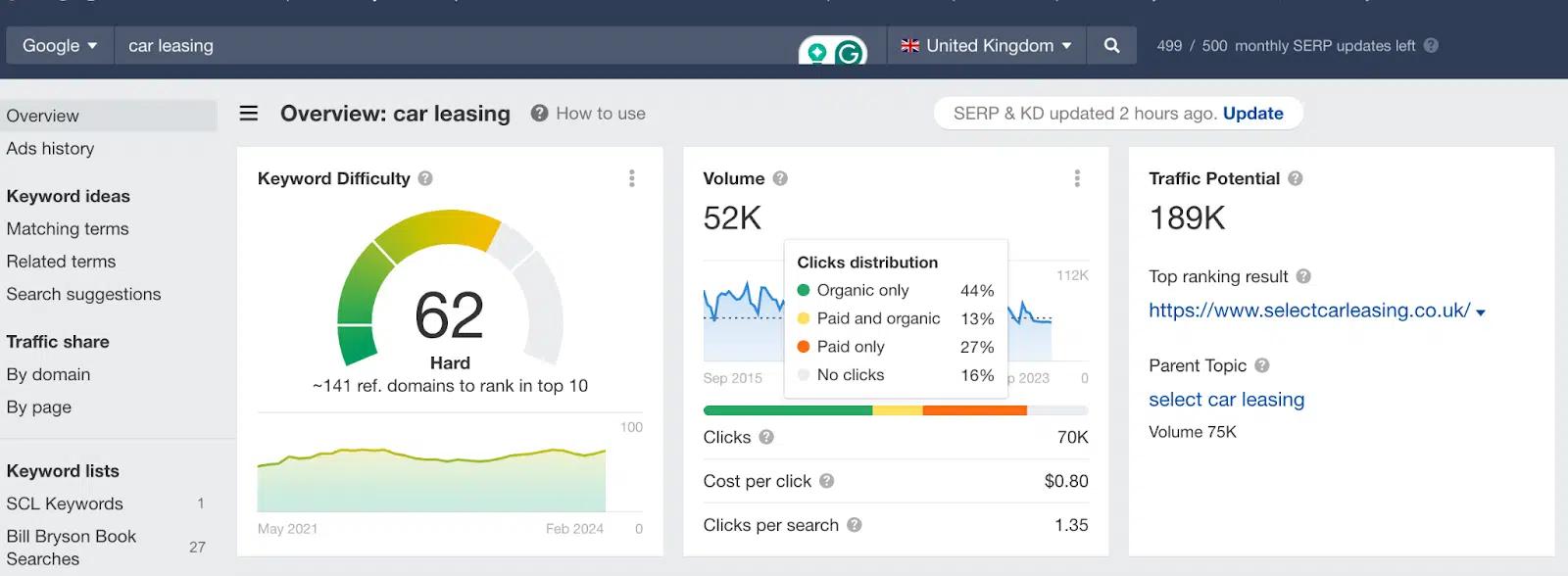

What about the term SEO agency? 47% goes to organic.
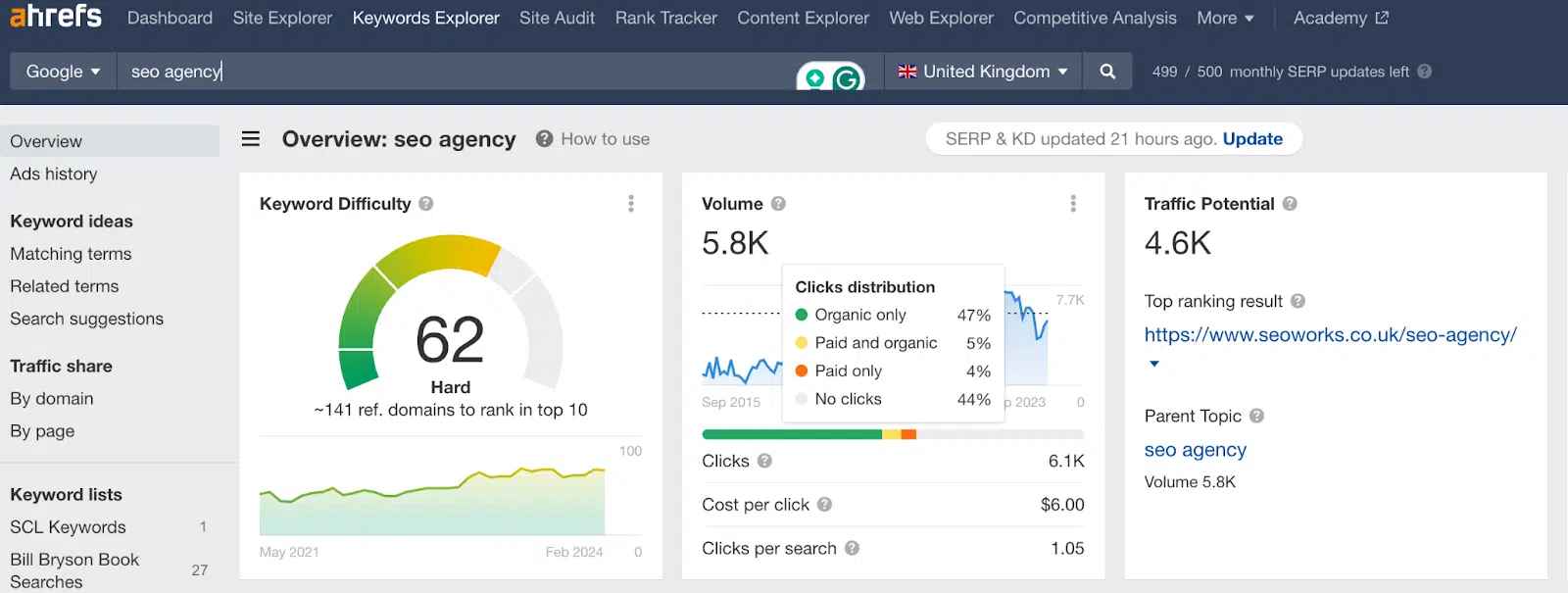

And here, when searching for dentists “near me,” 44% go to organic search and only 4% go to paid search.
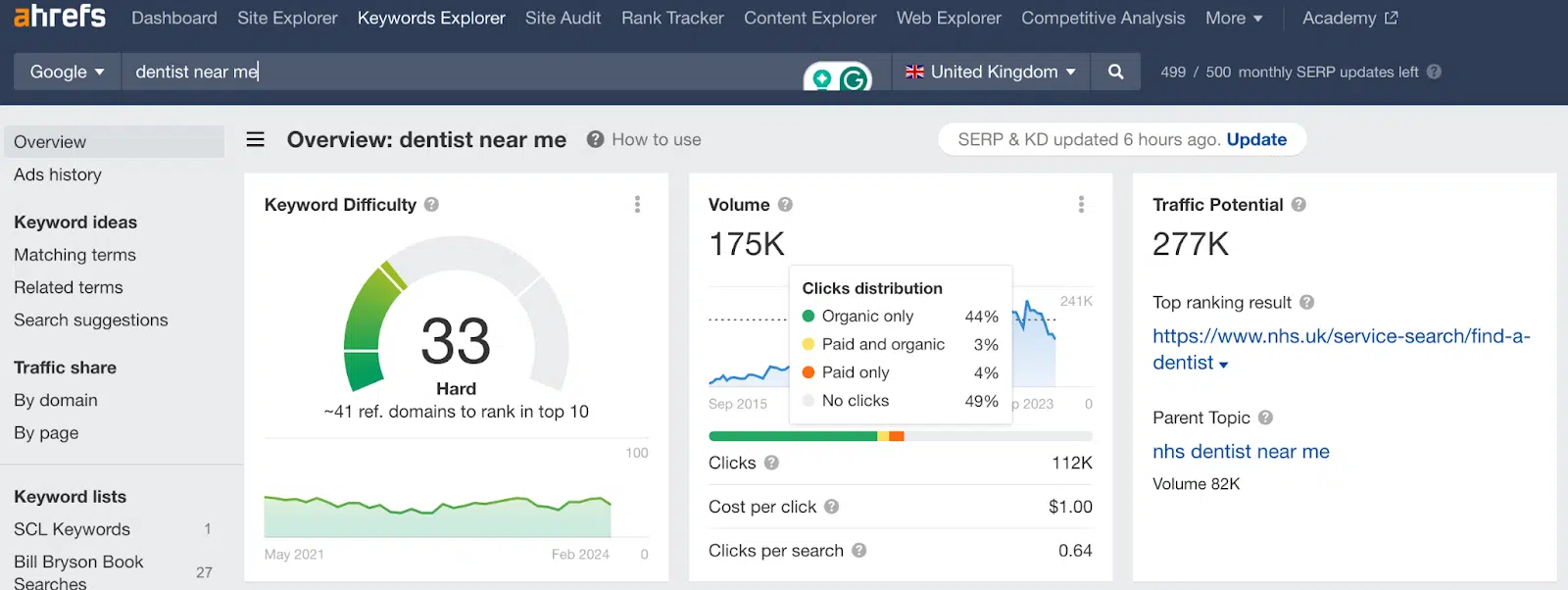

However, we know that paid search generates more clicks in some areas, such as Nike trainers.
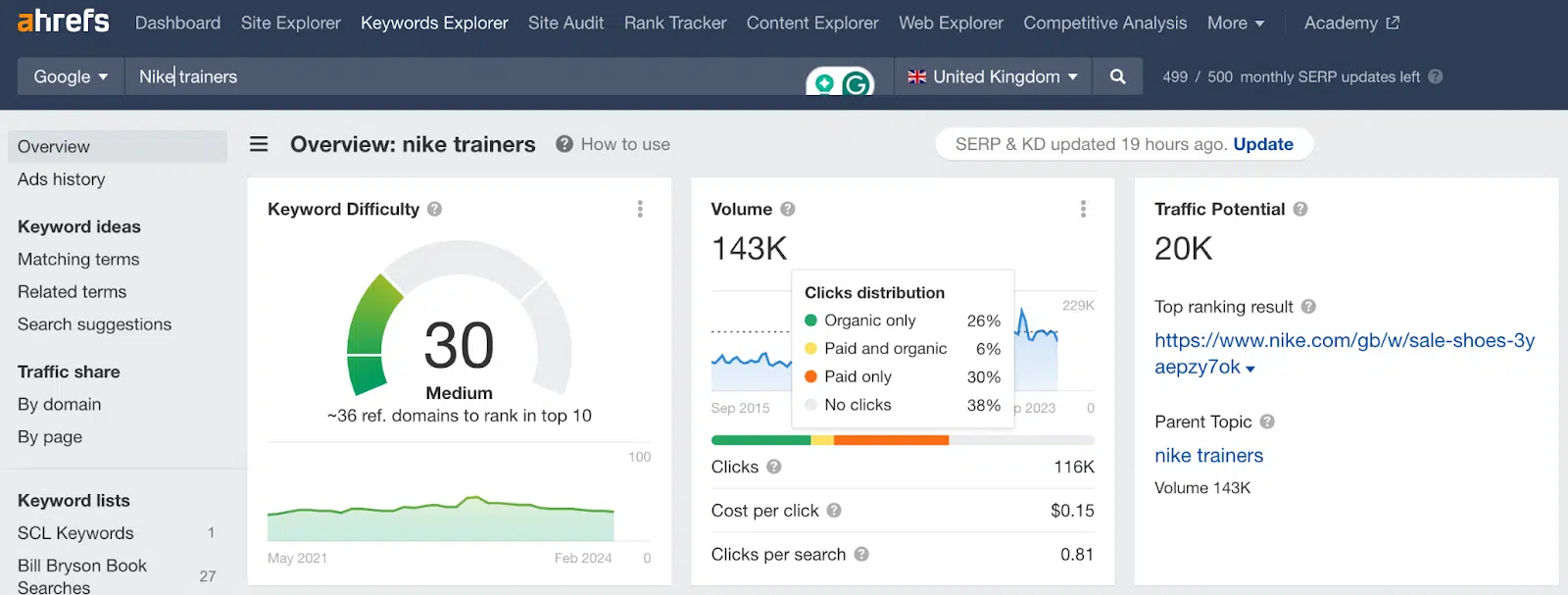

But we need to look at this beyond just clicks.
Acquiring customers through paid search clicks effectively reduces your profits, but in many cases they would have bought from you anyway.
And a huge number of buyers click on organic listings.
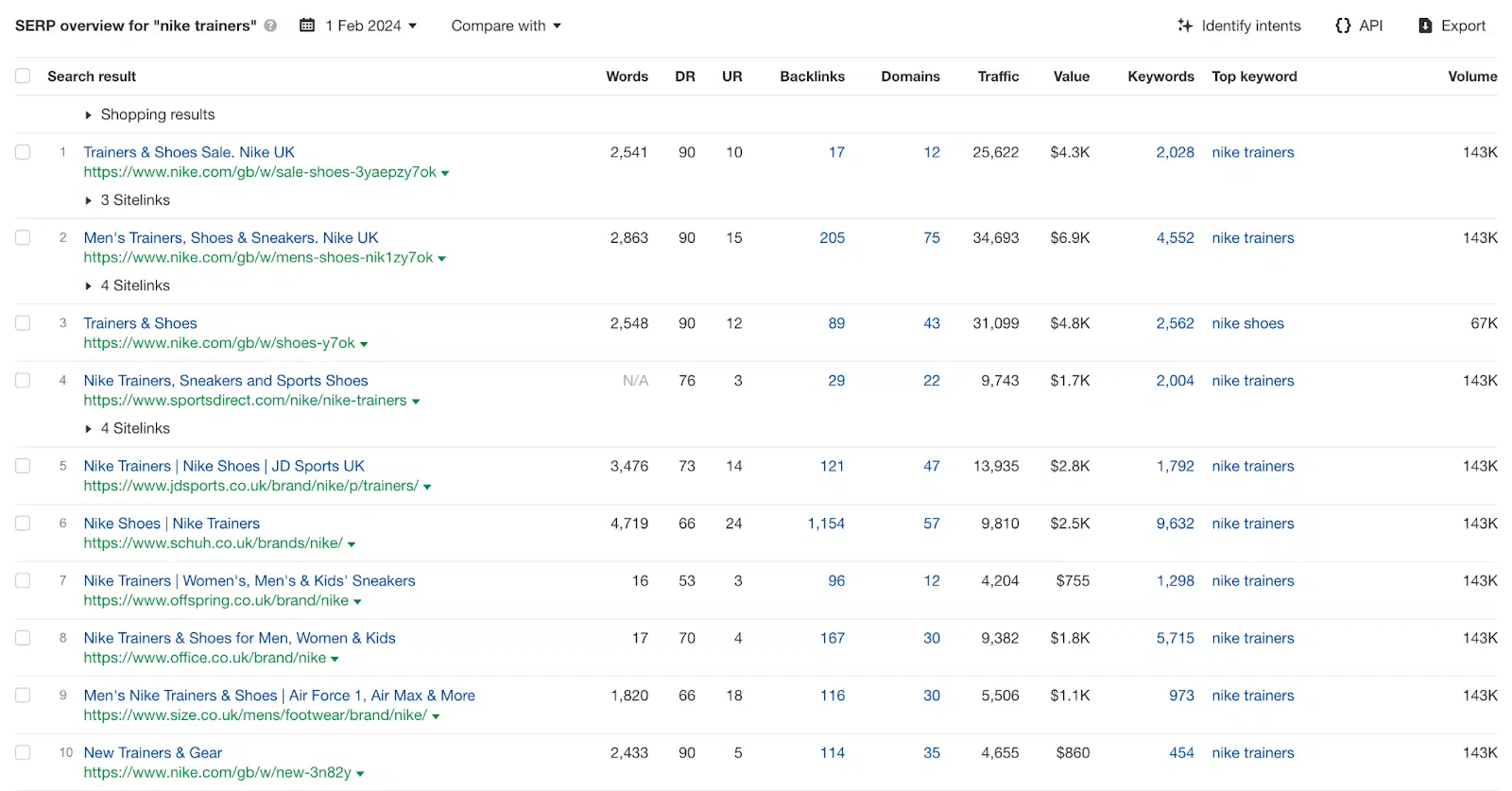

This is key to growth, as brands grow by attracting new light category buyers.
Justify your SEO investment
Over the years, I’ve talked to countless companies who failed to invest in organic search.
It’s all because they went hunting ROI, a mythical dragon.
This is strangely justified by mental accounting as follows.
“If I spend $3,000 a month on SEO, how long will it take to see results and how much will I earn?”
As mentioned in a previous article, SEO performance is not measured by ROI. You justify the investment.
If you don’t invest in SEO, you’re missing out on the opportunity to reach a huge number of potential customers and get more customers.
At the same time, some companies are growing their brands. You cannot acquire new light category buyers.
I really wish more marketing managers and business owners would wake up to this.
Organic search is competitive.
But so does every business.
Winning in organic search will give you a competitive advantage and help you grow your business.
It’s that simple.
- Do you want to grow?
- Are buyers using search engines to find products for sale?
If the answer is yes to both, then the question becomes how much you can invest in SEO and who you will hire to make this growth happen.
Once you understand the science, invest in SEO.
If you don’t, your competitors will.
Dig deeper: Why SEO is a good investment, not just a cost
The opinions expressed in this article are those of the guest author and not necessarily those of Search Engine Land. Staff authors are listed here.


